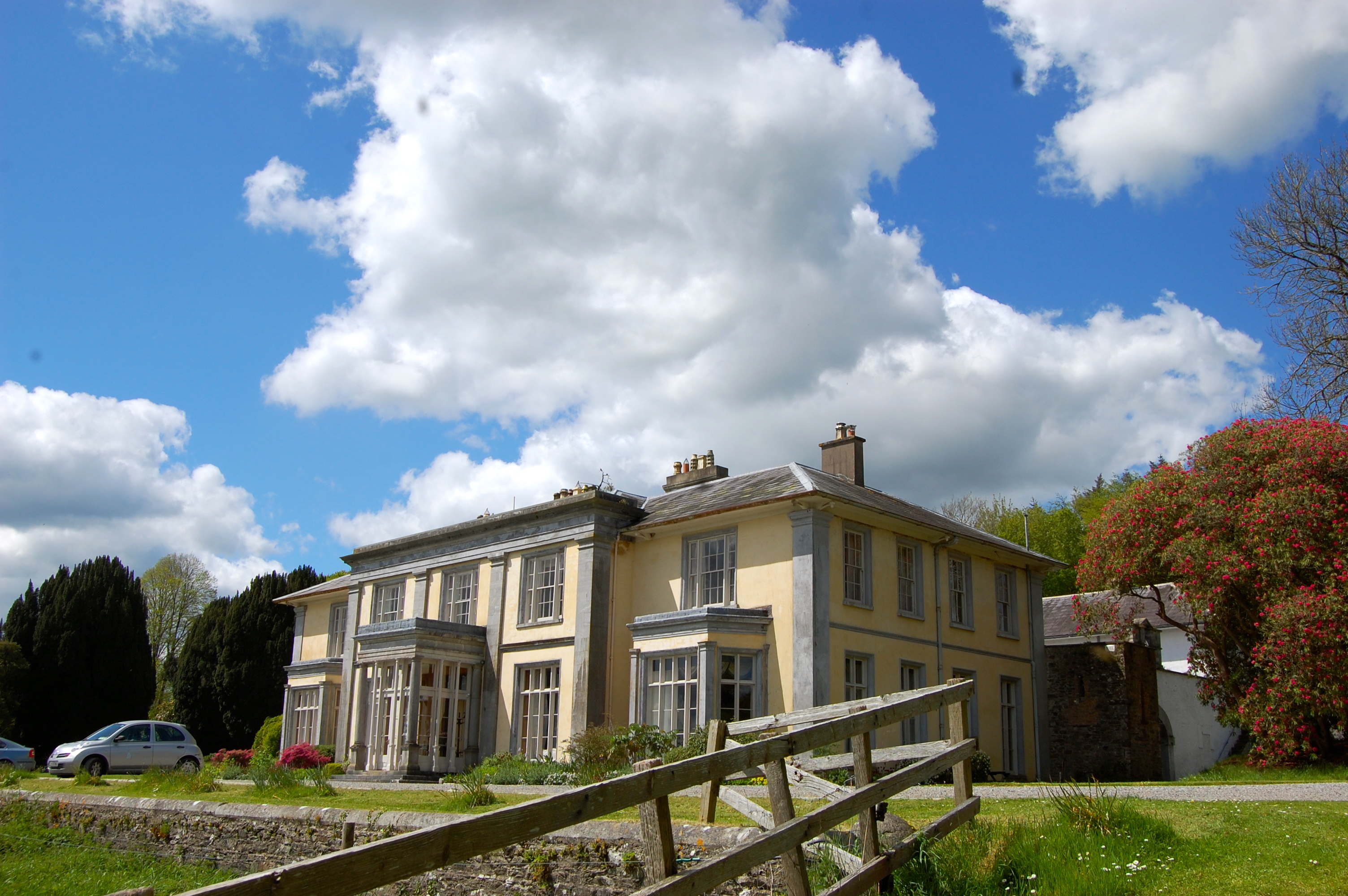
www.salterbridgehouseandgarden.com
This morning (Saturday 4th May 2019) we headed out to Salterbridge. We took an extremely scenic wrong turn, going up hairpin bends on a road, around county roads and back down via further hairpin bends! I never knew that Waterford is so beautiful! I joked with Stephen that everyone who lives in Waterford has to swear to keep it a secret how beautiful it is! Everyone I mention it to here says it’s the hidden county! Thank goodness for gps. We found Salterbridge with the gps, and turned into a long driveway.
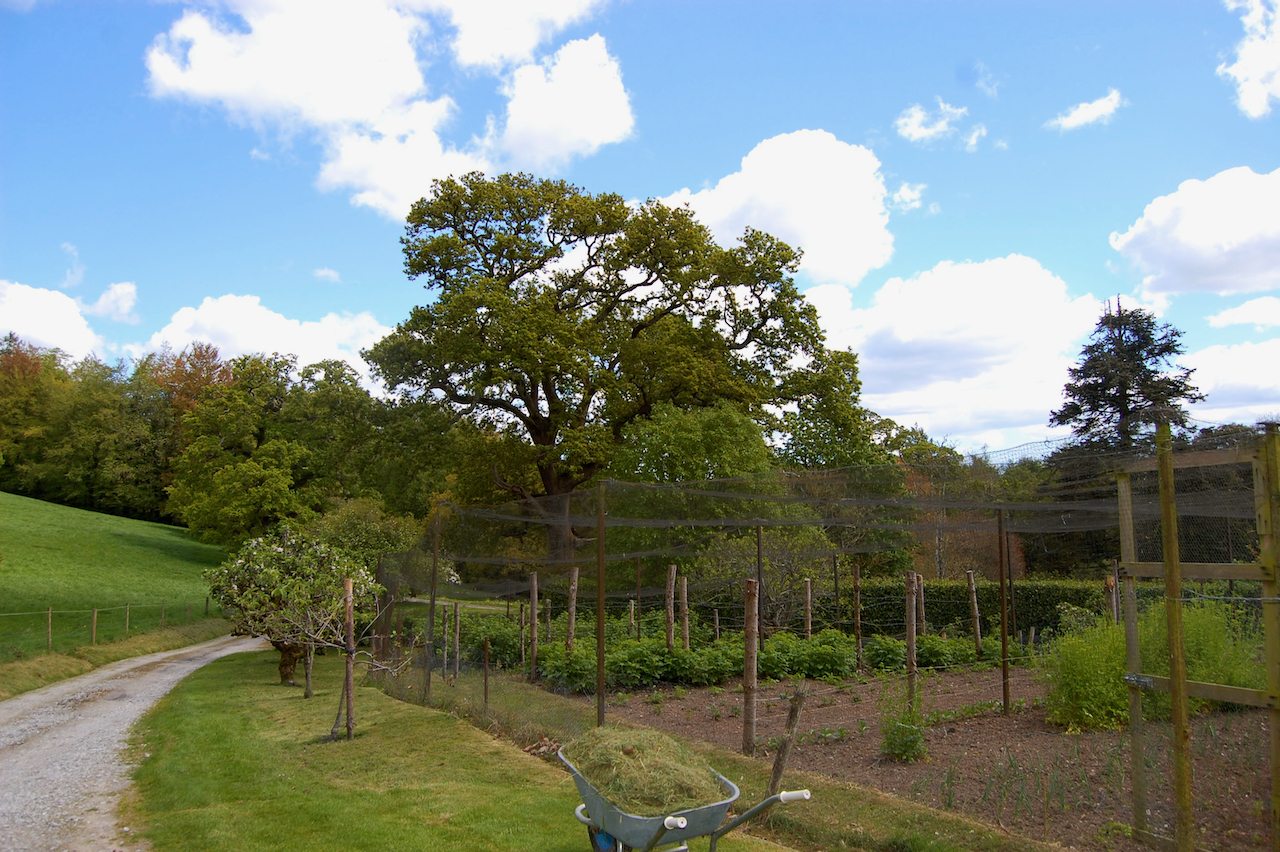
I had emailed in advance and they knew we were coming. We were greeted by Susie and her son Edward. Susie gave us a quick run down as to why there are many estate houses in the area: it’s because of the Blackwater River. It runs in from the sea and Cappoquin is strategically situated. Salterbridge and Tourin, nearby, were owned by a pair of brothers, the Musgraves. The original house on this site was built in about 1750 by Richard Musgrave on land which had been acquired from the Lismore Castle Estate, from the Earls of Cork. [1] Richard was the elder son of Richard Musgrave of Wortley, Yorkshire, who settled in Ireland, whose younger son was Christopher (1715-1787) who settled at Tourin. We visited Tourin later that afternoon.
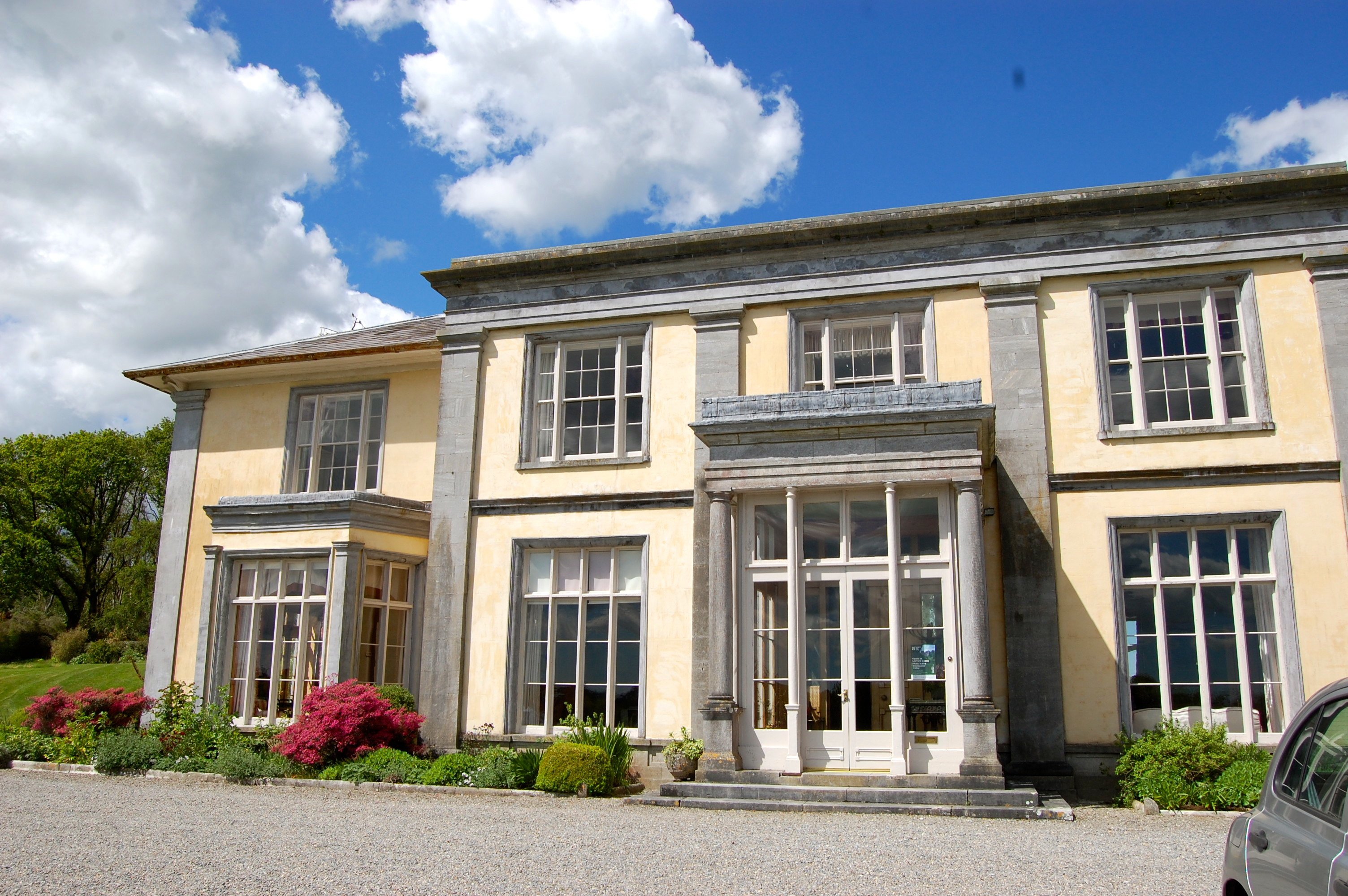
Mark Bence Jones describes Salterbridge in A Guide to Irish Country Houses as a two storey house of 1849, built onto the front of an earlier house. [2] It is not known how much of the original house has been retained.
Richard Musgrave died in 1785 (an information leaflet which Susie’s husband Philip gave us, tells us that Richard Musgrave’s memorial, by William Paty of Bristol, can be seen in Lismore Cathedral). Musgrave’s daughter Janet, who had married Anthony Chearnley (d. around 1786 [3]) of Affane (County Waterford), inherited the property.
Anthony Chearnley was an amateur architect and artist. The Dictionary of Irish Architects tells us that he was the architect of Burnt Court, Co. Tipperary, a house which he built for himself in front of the ruins of Burntcourt Castle. He later moved to Spring Park in Affane. Engravings after his topographical drawings appear in Grose’s Antiquities of Ireland, Ledwich’s Antiquities, Smith’s History of Waterford and Smith’s History of Cork; one of the plates in the latter work was engraved by him, and more of his engravings appear in The Compleat Irish Traveller (London, 1788).
Anthony Chearnley was a widow when he married Janet Musgrave. He was previously married to Ann Gervais, daughter of the Rev. Isaac Gervais, Dean of Tuam, and they had a son, Thomas.
The house, which in the nineteenth century was at the centre of an estate of over 18,000 acres, passed to the son of Anthony and Janet née Musgrave, Richard Chearnley, and it remained in the ownership of the Chearnley family until 1947, when it was bought by Susie’s husband’s family, the Wingfields of Suffolk.
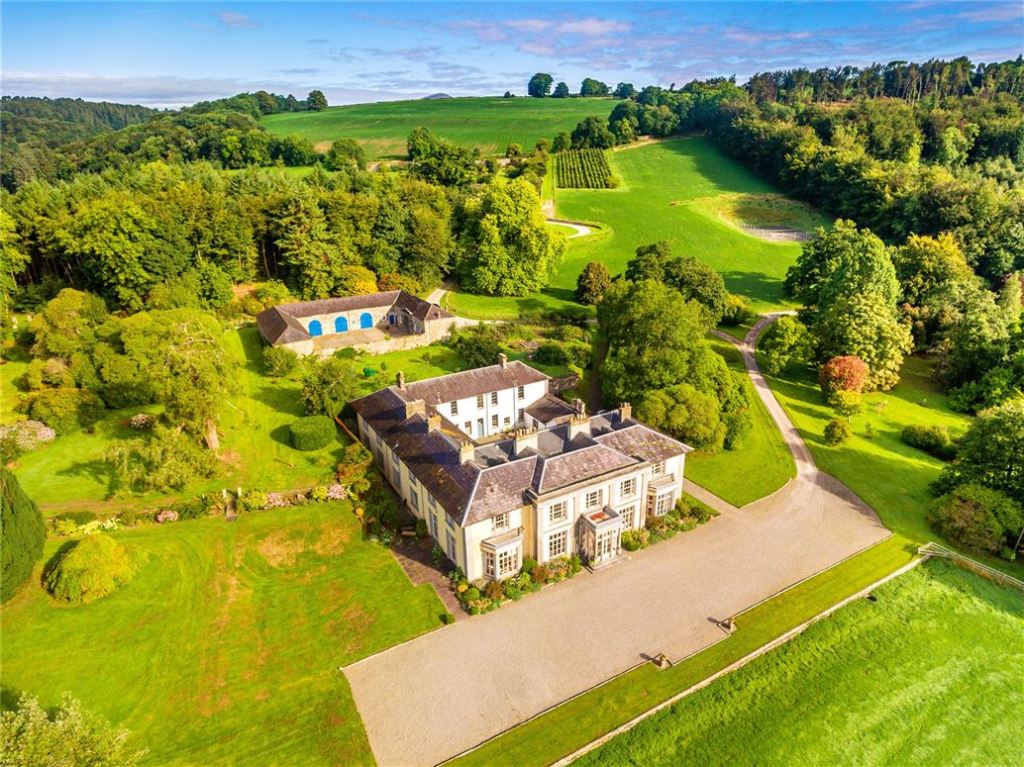
An older son, Samuel, lived at Burntcourt. Anthony Chearnley left Salterbridge to his son, Richard. Richard died childless in 1791, so the estate passed to his brother, Anthony (1762-1842).
Anthony (1762-1842) was High Sheriff of County Waterford. He married first Julia Browne of Gaulstown, County Meath, but she died and he married Isabella, daughter of William Newcome, Archbishop of Armagh. Anthony’s first son died unmarried and his second son, Richard (1807-1863), succeeded to the estate in 1842 and also followed in his father’s footsteps to become High Sheriff of County Waterford. He married Mary, daughter of Henry Cotton, Archdeacon of Cashel. It is this Richard who built the addition to Salterville.
The 1849 front was built for Richard Chearnley (1807-1863), but the builder or architect is not known. The house is in the “Regency Picturesque” style. Bence-Jones writes that the house extends around three sides of a courtyard, enclosed on the fourth side by a screen wall with an arch. I wouldn’t have been able to tell that the house forms a u-shape, it’s not obvious from the ground.
The 1849 front consists of a three bay centre, with a parapet (a low protective wall along the edge of a roof, bridge, or balcony) and tall grey limestone pilasters between the bays (a pilaster is a flat rectangular pier or column projecting slightly from the wall – the Irish Aesthete describes these ones as Tuscan) [4][5]. There are three cut limestone steps up to the projecting front door porch, which is single bay, single storey with a flat roof. The house has two storey one bay wings with eaved roofs and single storey three sided bows, as Bence-Jones describes, and Wyatt windows were installed. A Wyatt window, according to Bence-Jones, a rectangular triple window, named after the English architect, James Wyatt (1747-1813). The porch is glazed and in the Classical style. The wings have pilasters at their front end similar to the four limestone pilasters of the centre block and the bow parapets match parapet of the central porch and block.
The National Inventory website tells us that one side has six bays (west) and the other, four bays. [6]
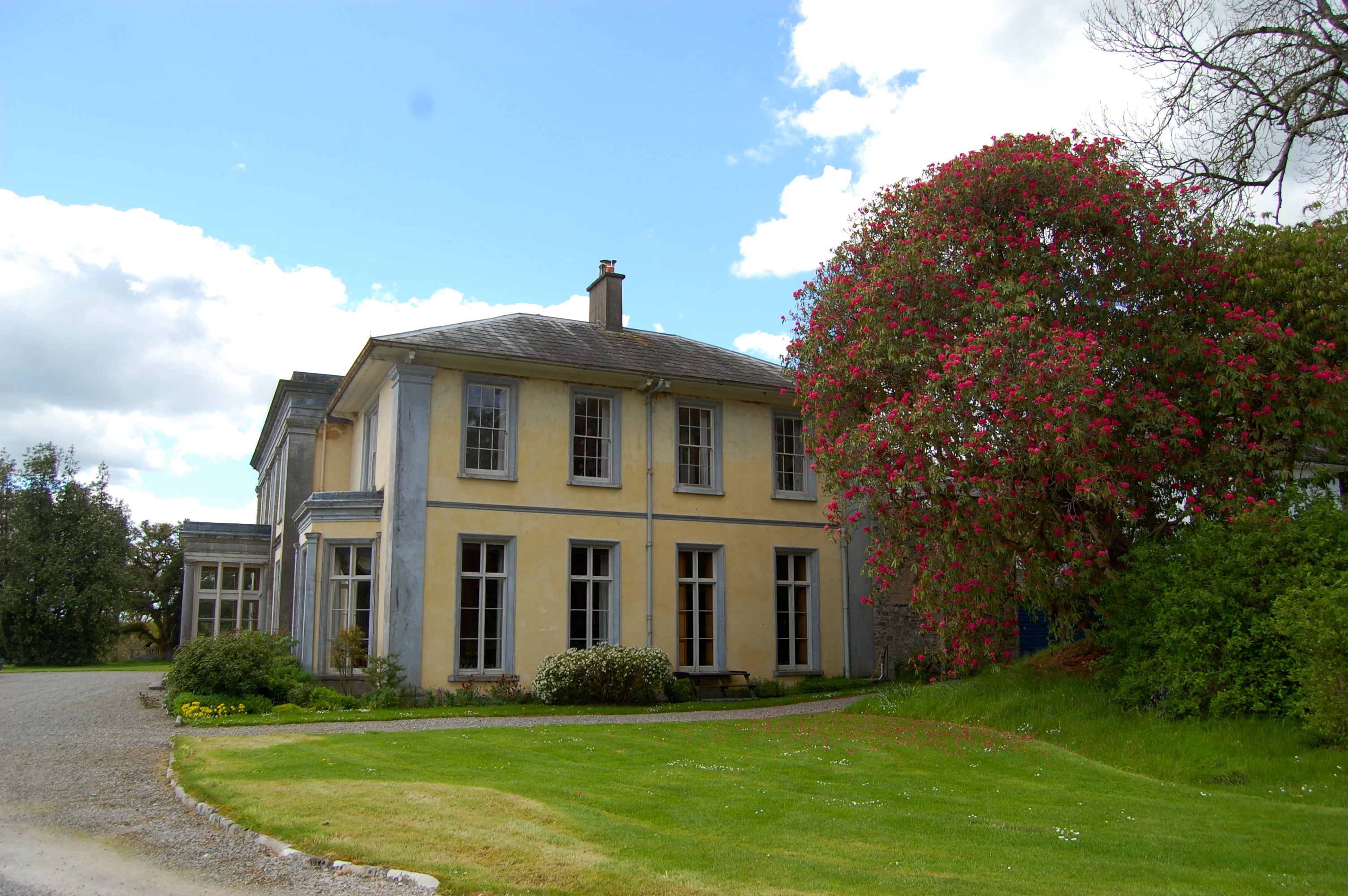
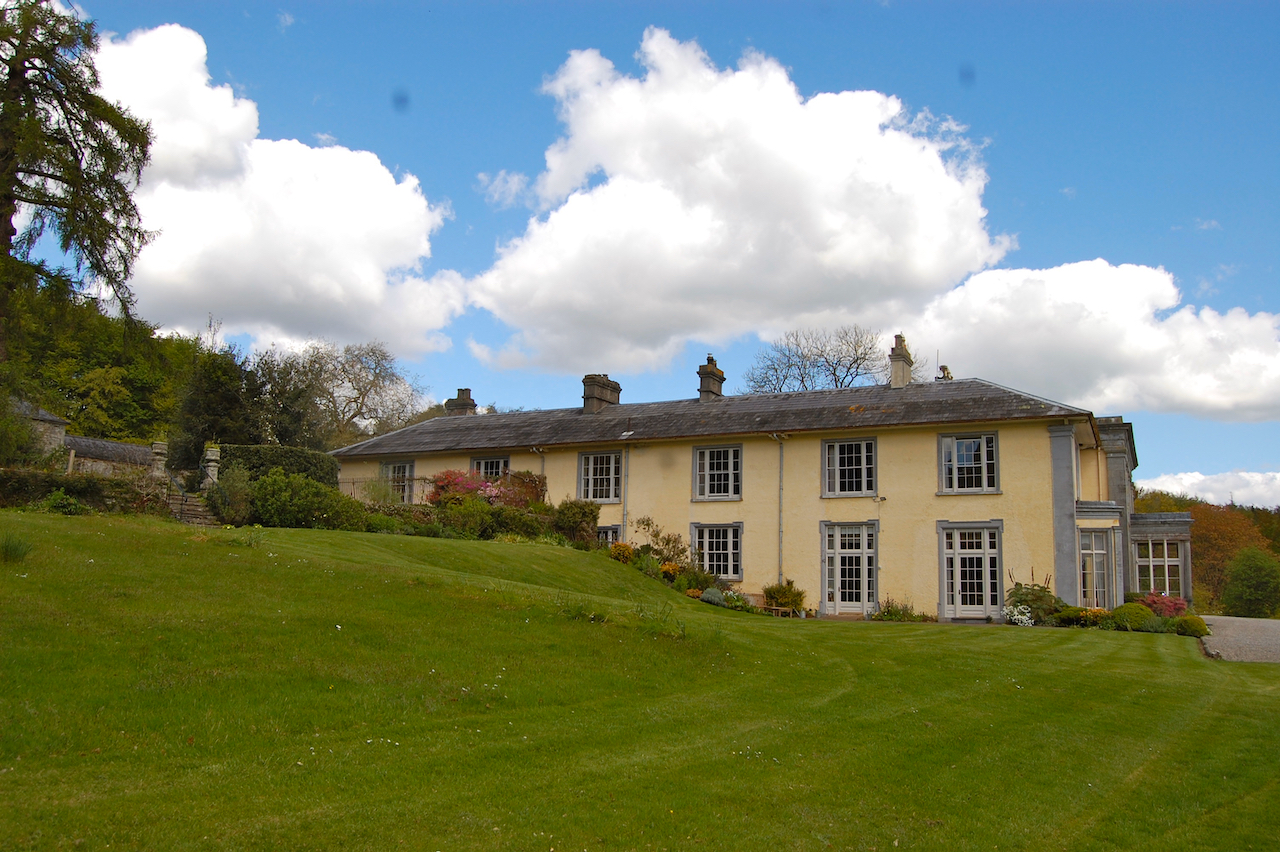
The interior shows its early Victorian origin. The date 1884 is carved into the oak panels in the hall. You can see the carved oak panel with the date, and the marvellous wooden carved fireplace complete with cherub, on the Irish Aesthete’s website [7] The hall has a bifurcating oak staircase behind a screen of dark wood Corinthian columns.
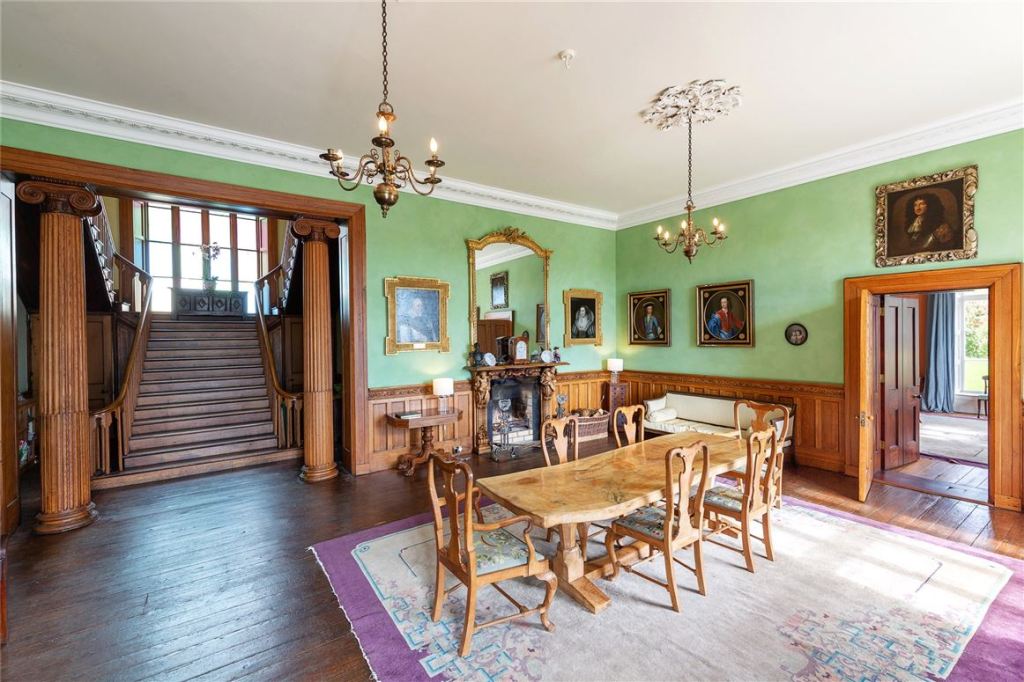
Susie showed us a quirky feature : the rooms were panelled and there’s a gap between two doors, which her children called “the elevator.” That is, on leaving one room you can close the door behind you, and the room you are entering has another door, so if both are closed, you stand in a little space like an elevator! We first entered the dining room, and her husband Philip then joined us. His parents, the Wingfields, bought Salterbridge House. They came from England, and were cousins of the Wingfields of Powerscourt Estate in Enniskerry. [8] Philip pronounced it “Poerscourt” because apparently it was initially named after the de la Poer family, who lived in Wicklow.
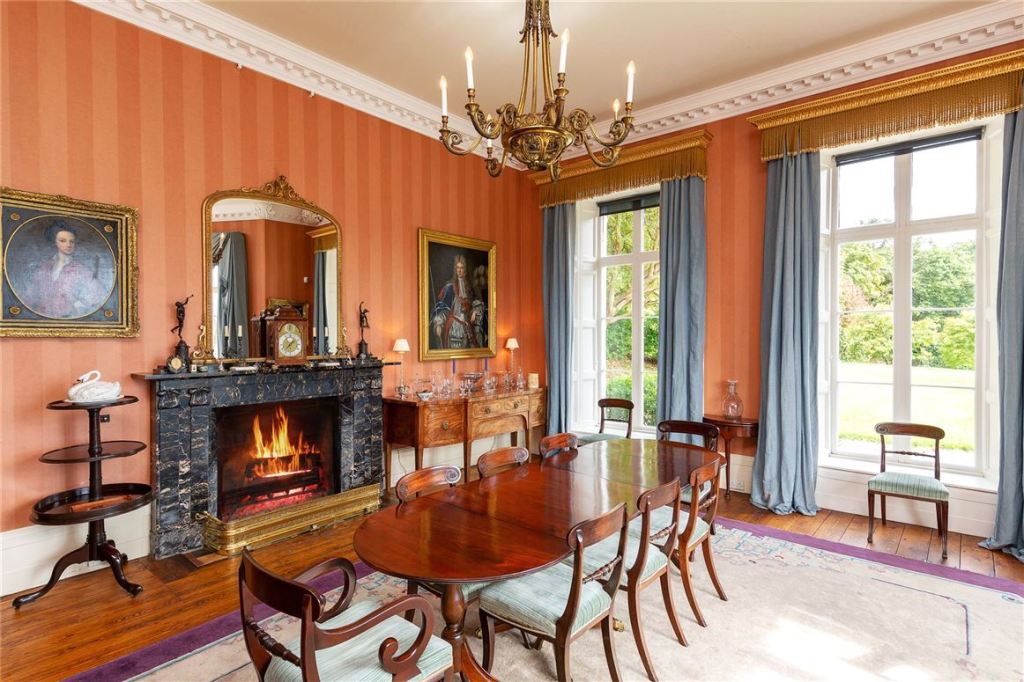
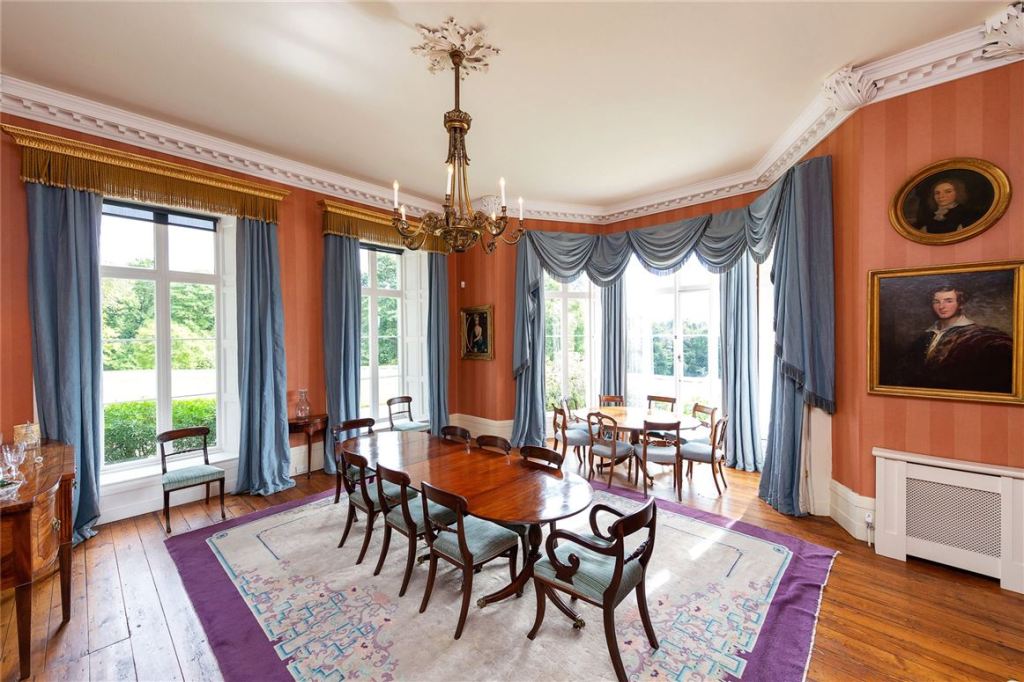
We next entered the drawing room, which has ceiling decoration of scrolls and shields.
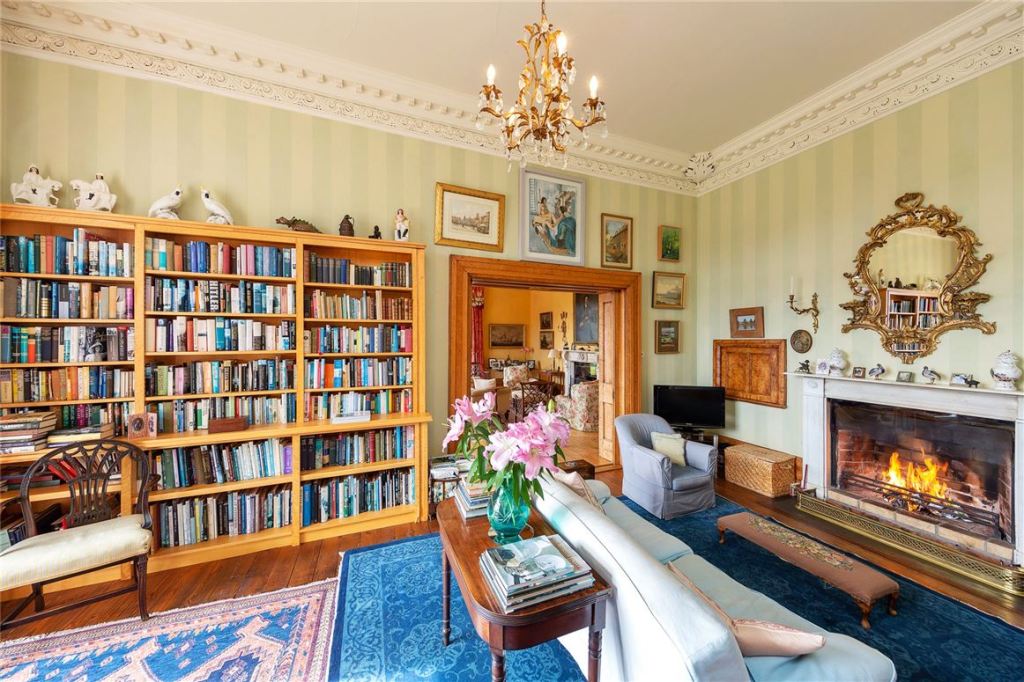
Richard and Mary née Cotton’s oldest son, Richard Anthony Chearnley, died young, and was only thirteen years old when he inherited the property. He died at the age of 29 in 1879, and was succeeded by his younger brother, Henry Philip Chearnley (1852-1916). He too was High Sheriff of County Waterford and a Major in Waterford Artillery Militia.
Henry Philip Chearnley married Anne Elizabeth, daughter of John Palmer of Tralee. He was succeeded by his son, Henry John Chearnley, who died in 1935.
In 1940, Philip told us, the house was requisitioned for the army: being in such a strategic position made it vulnerable to an invasion by the Germans. At that time, Henry John’s second wife, Ruby née Burstall, and a son, Philip, lived in the house. Mrs. Chearnley and her son were given just twenty-four hours notice to leave the house. In 1947, it was sold to the Wingfields.
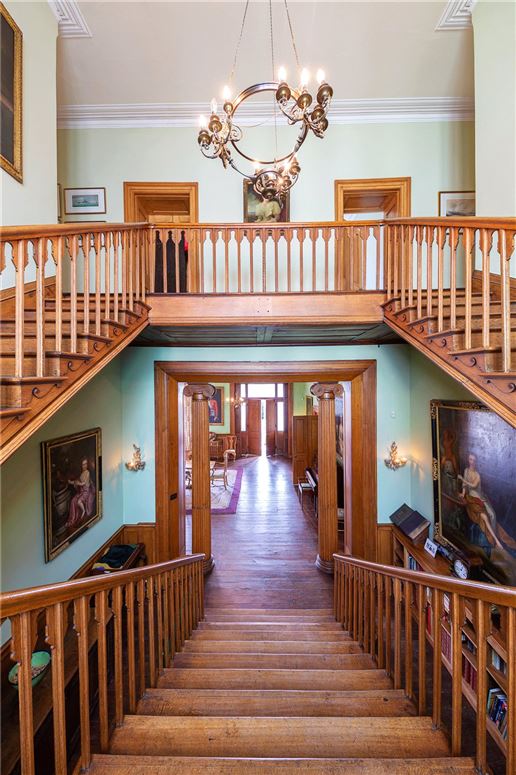
Philip showed us features of the house. I told him of my blog. He told us of the history of the house and of his family, the Wingfields. We were delighted to learn that he is distantly related to Thomas Cromwell (see my Powerscourt townhouse entry)! Naturally this current indirect descendant Philip read Hillary Mantel’s books, Wolf Hall and its sequel, and he told us a third is to follow! Fantastic! I can’t wait, as I read and loved them too, after watching the brilliant rendition of Cromwell by Mark Ryland! [9]
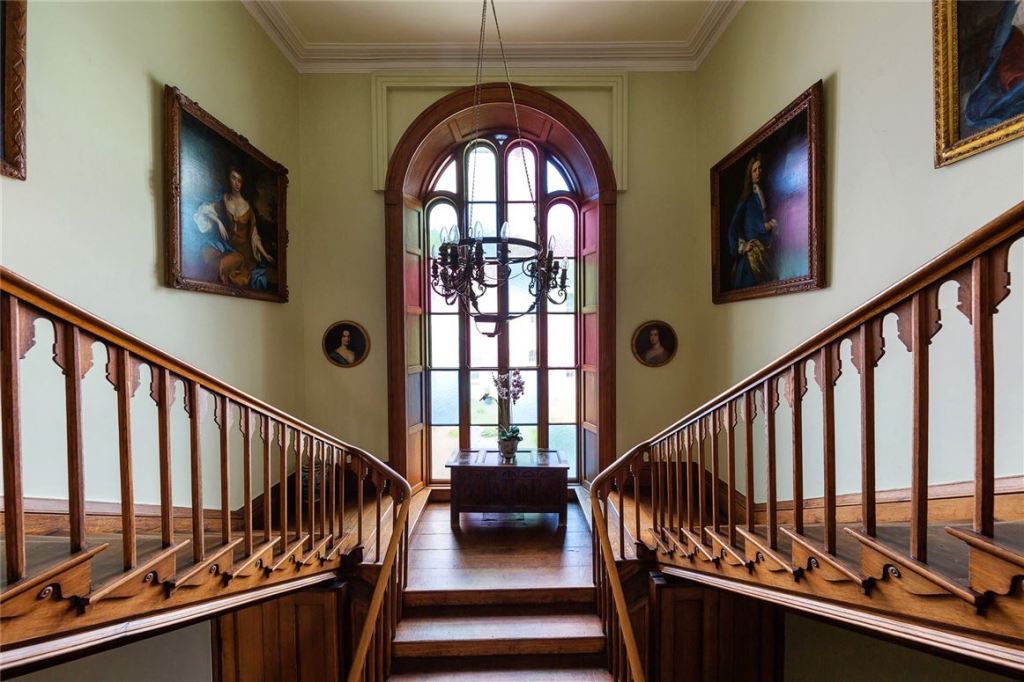
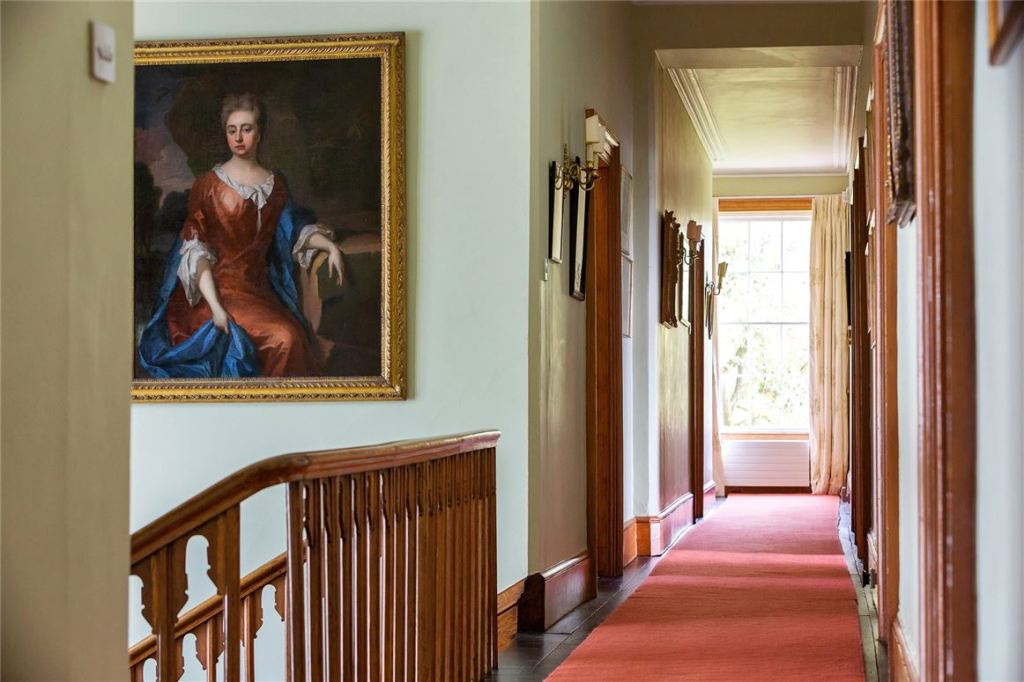
Another ancestor of Philip’s, on his paternal grandmother’s side, the Paulets, or Pouletts as they later spelled it, from Somerset, was involved in the unification of Scotland with England in the time of Queen Anne. “Not under James I?” I asked. No, I learned, they were still two separate countries then. It was under Anne that the Scots agreed to unification, as they had run out of money, Philip told us. It’s lovely to learn history in such a conversational way, chatting with home owners about their ancestors. We were shown some beautiful rooms upstairs, then we headed out to explore the gardens.
We went around the side after our house tour, to see the courtyard and arch. The arch shows the date of 1849, seen when looked at from inside the courtyard.
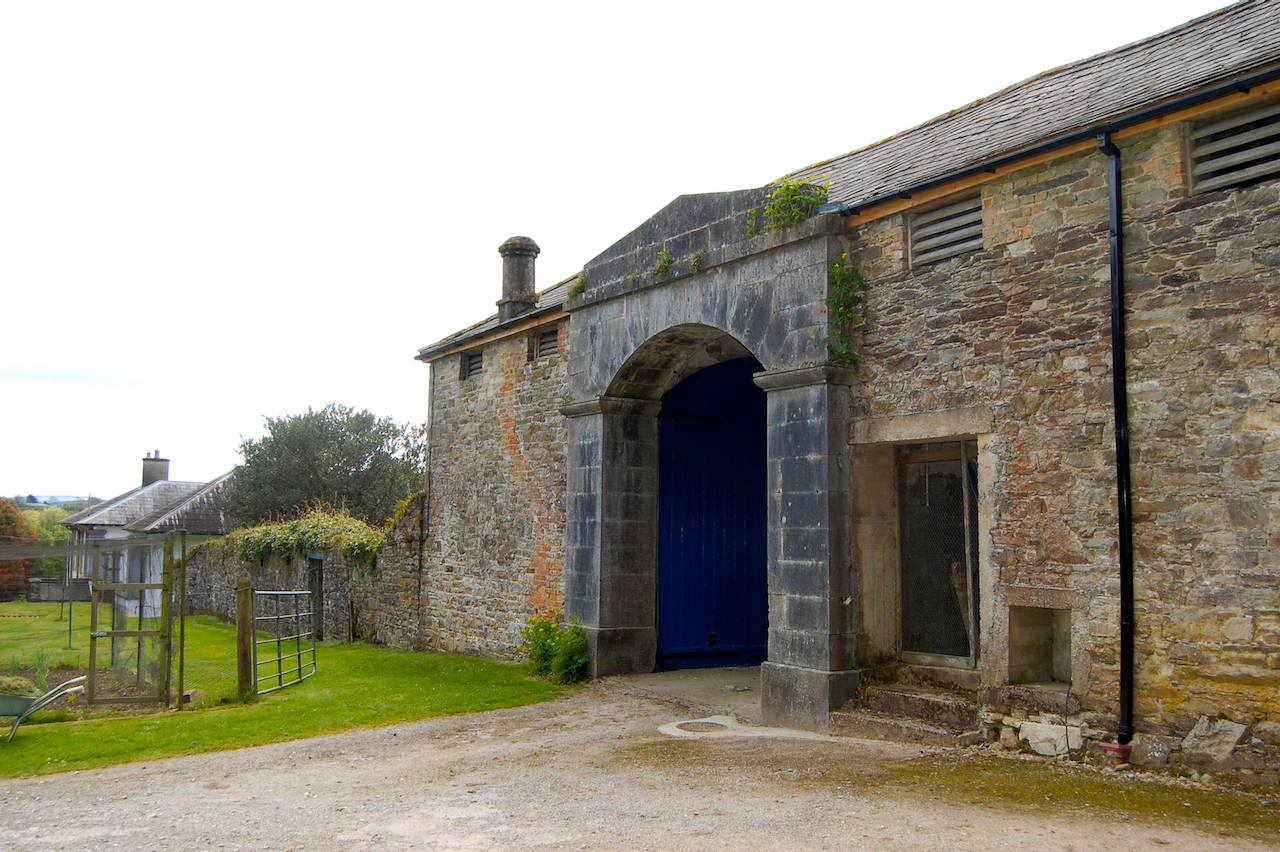
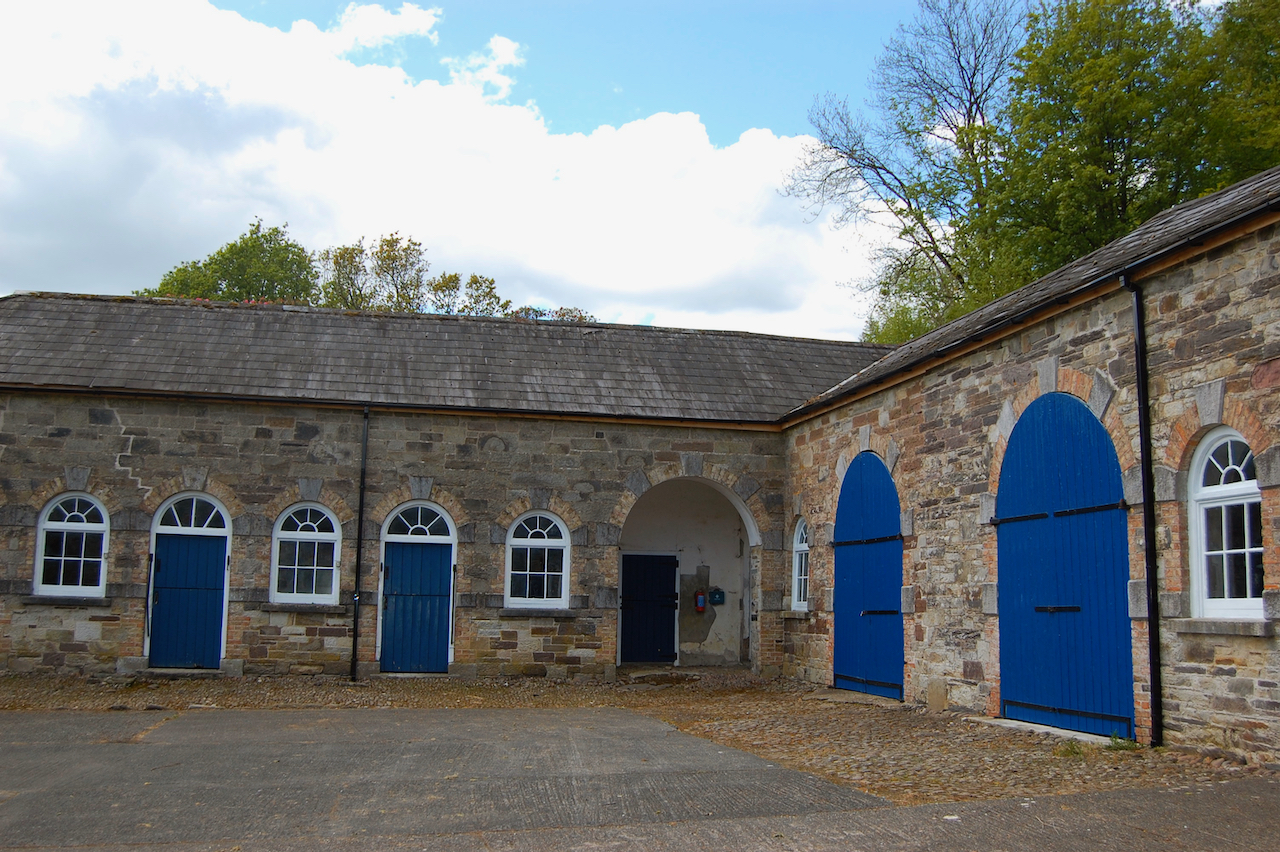
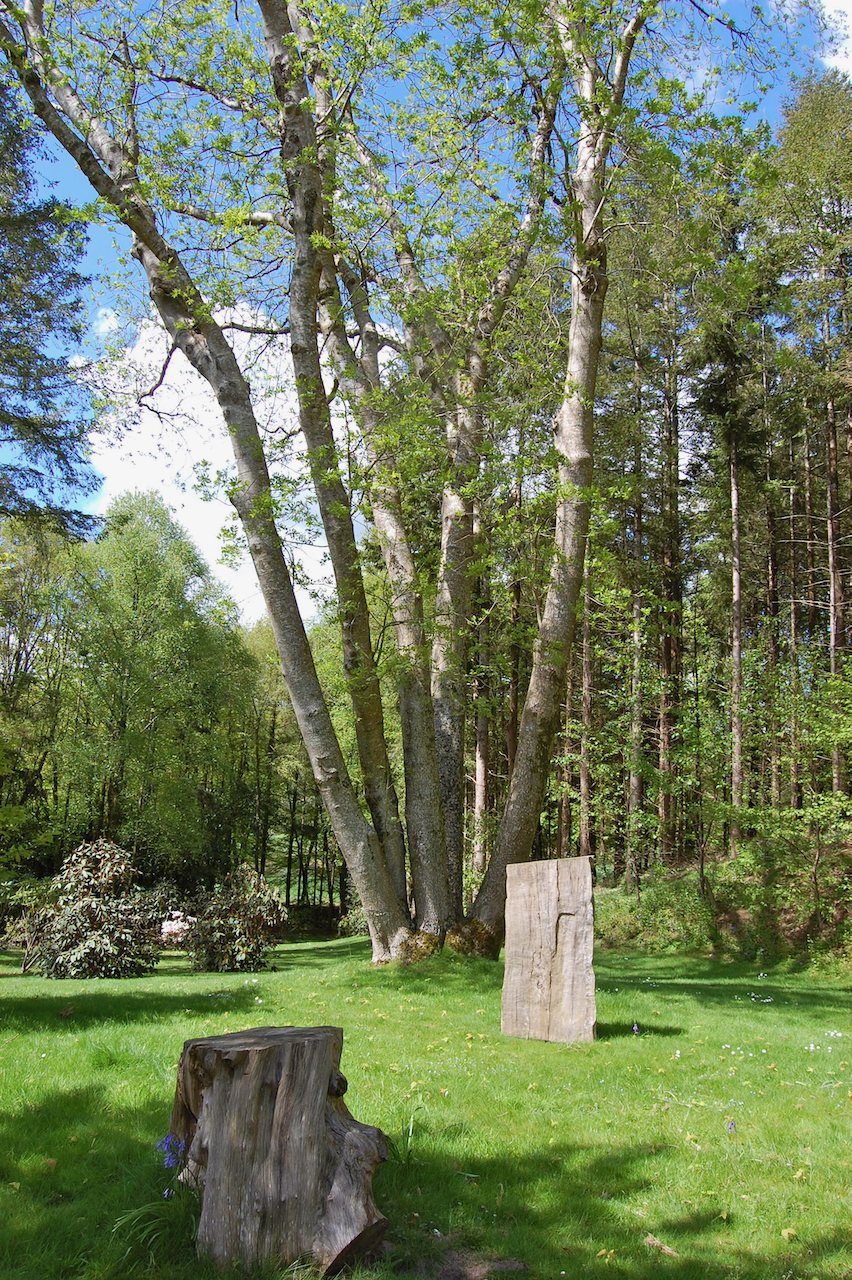
We have been blessed with the weather. We admired the flowering rhododendrons, magnolias and camelias. According to a website, the trees include most notably four splendid Irish yews, a cork oak, an Indian horse chestnut and a single leaved ash.
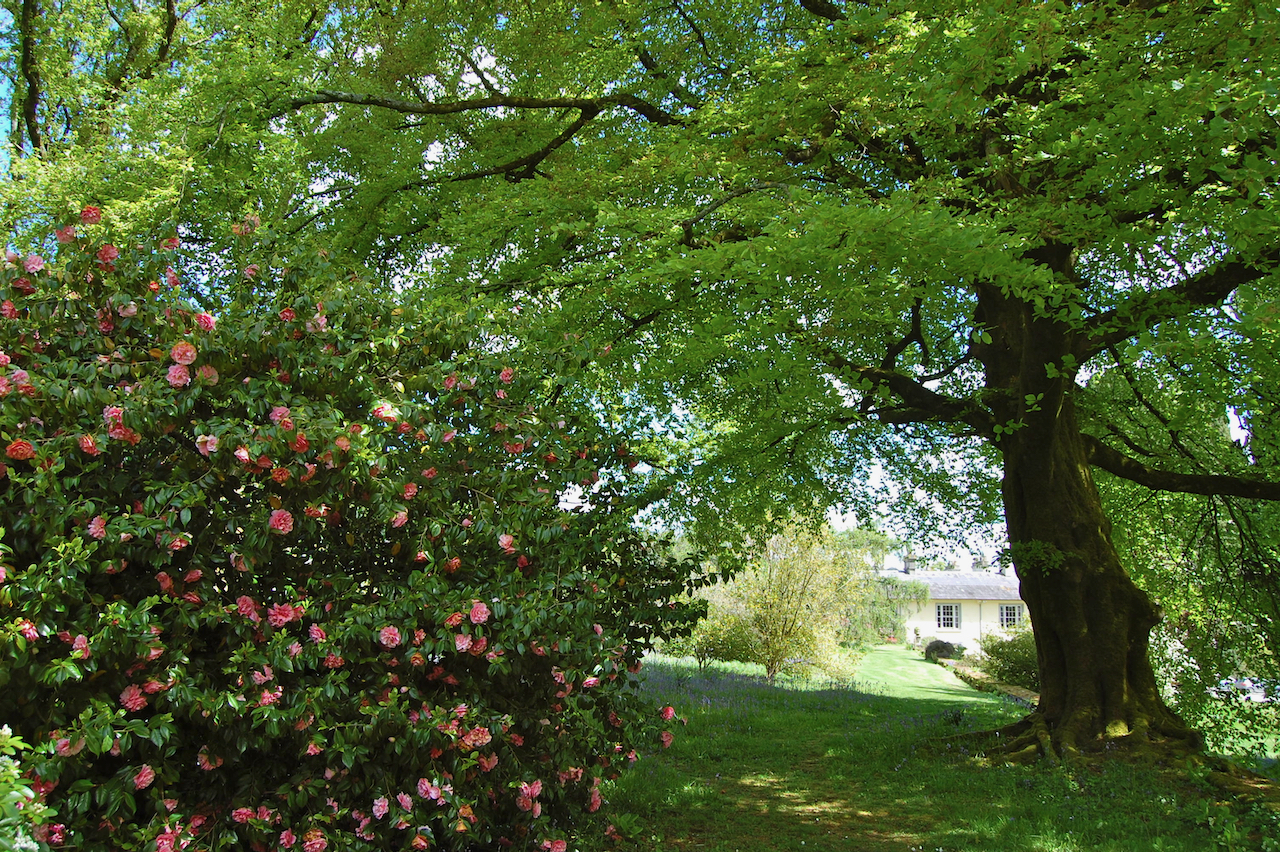
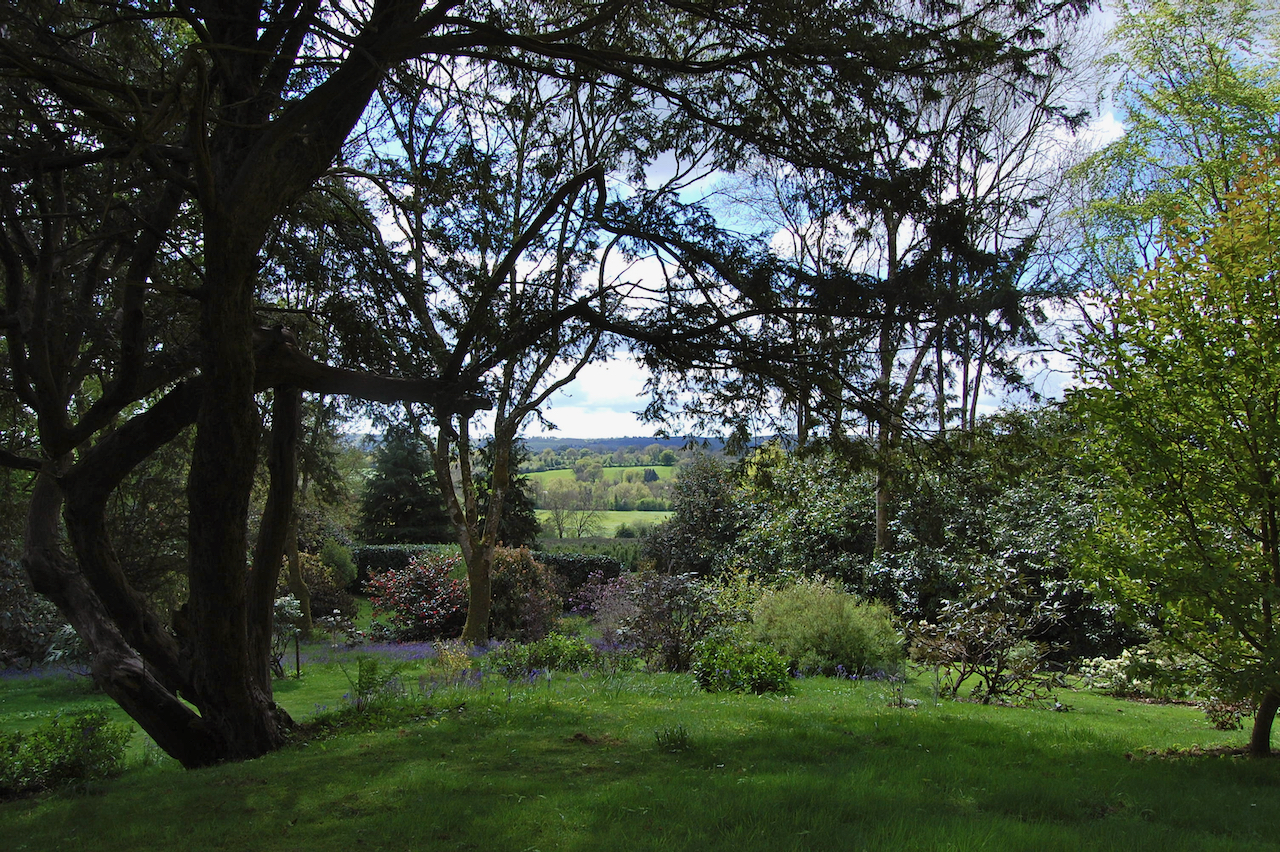
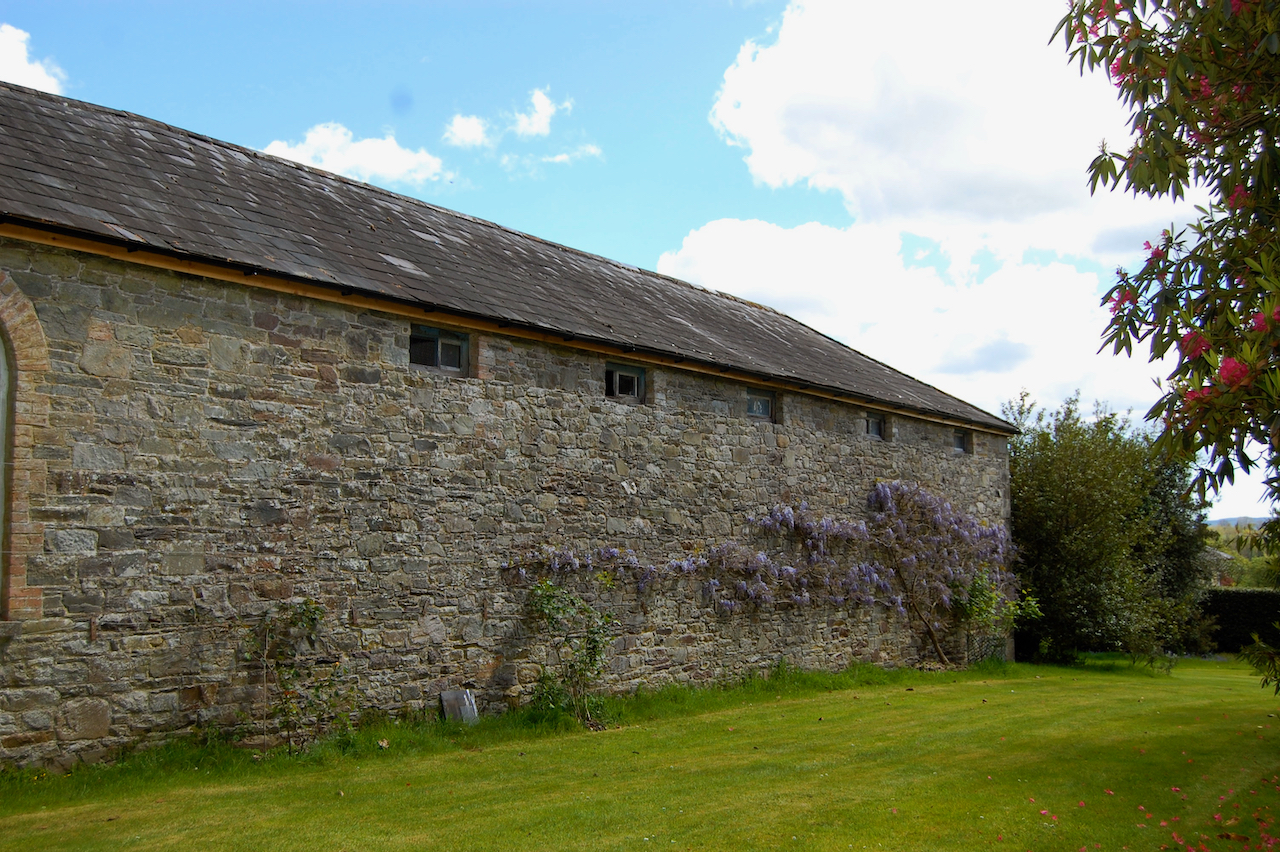
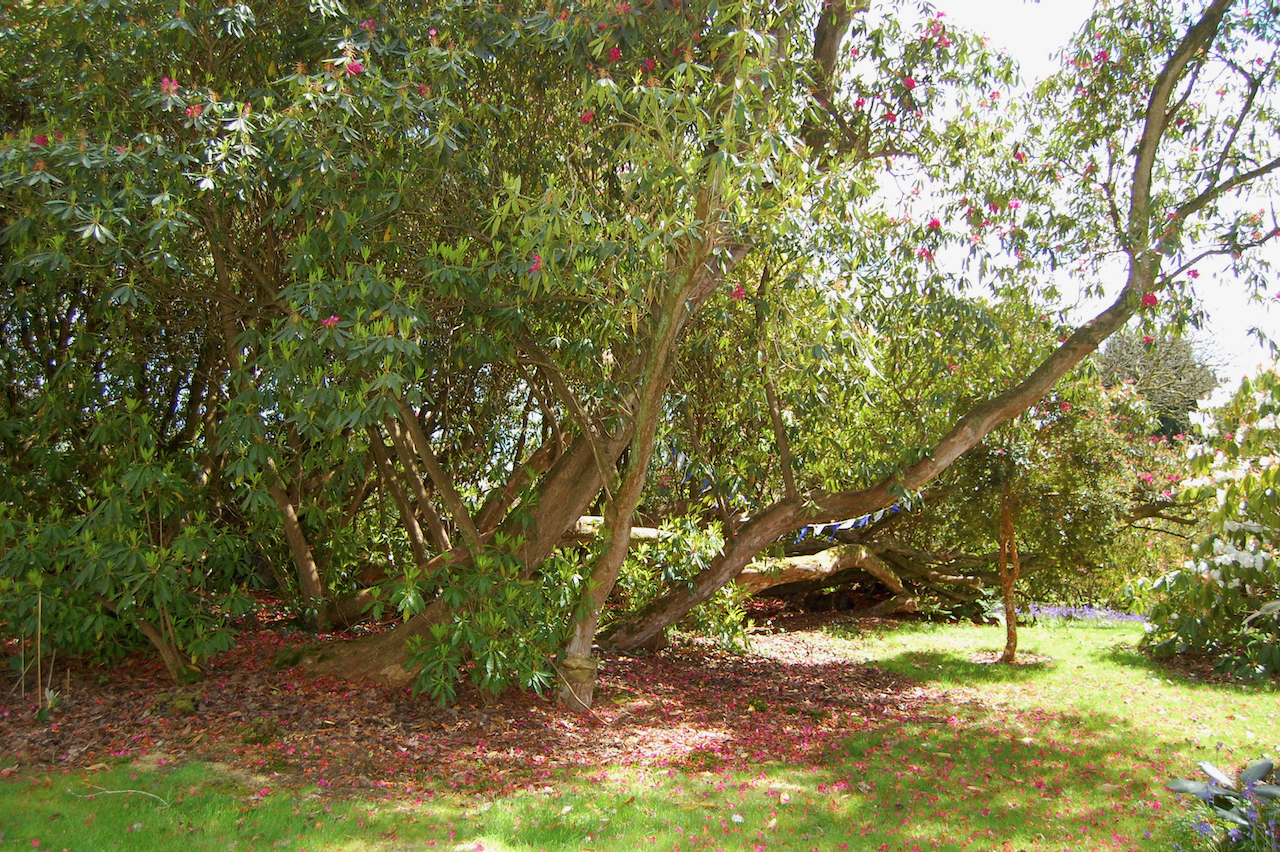
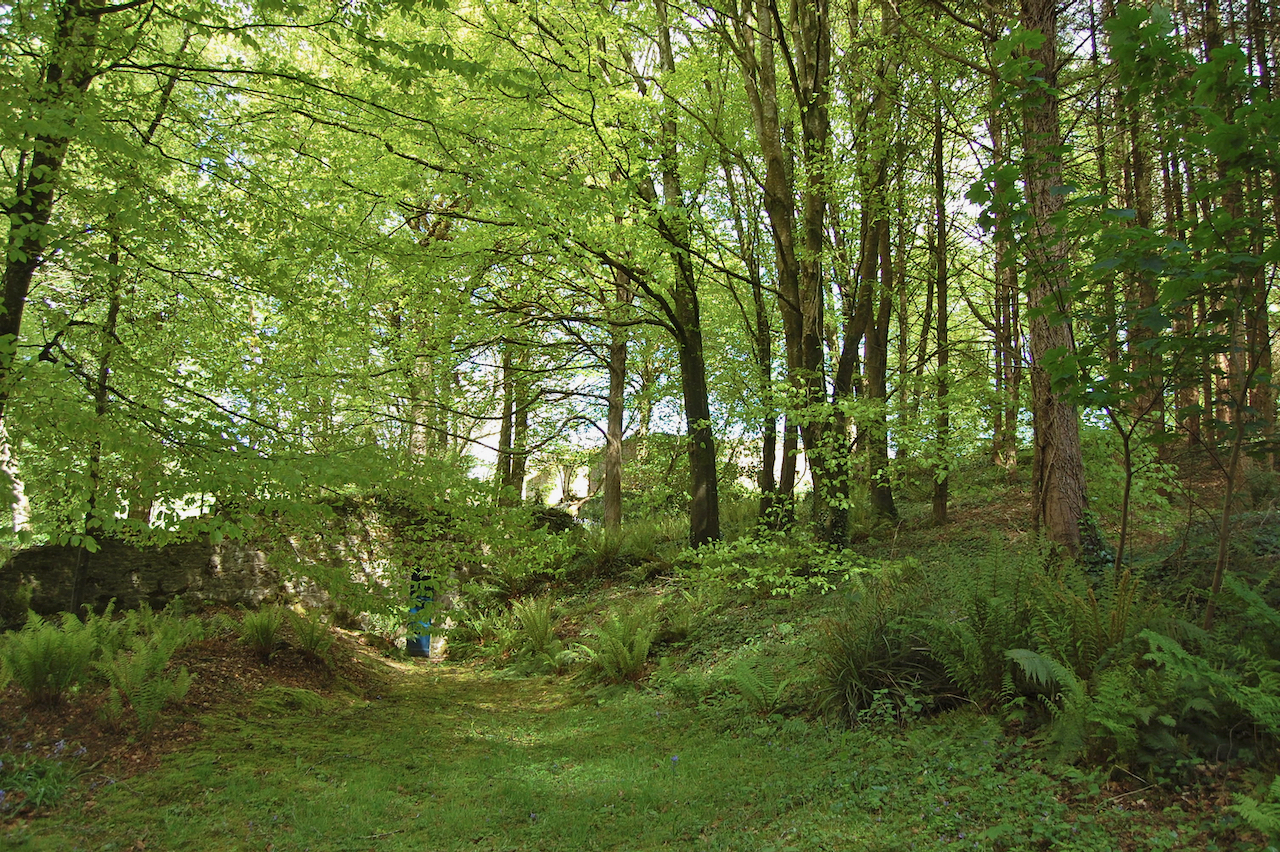
The house has a gorgeous view, and a road used to run along the front of the house, as one can see by the fantastic bridge to one side of the front of the house – the bridge for which Salterbridge was named.
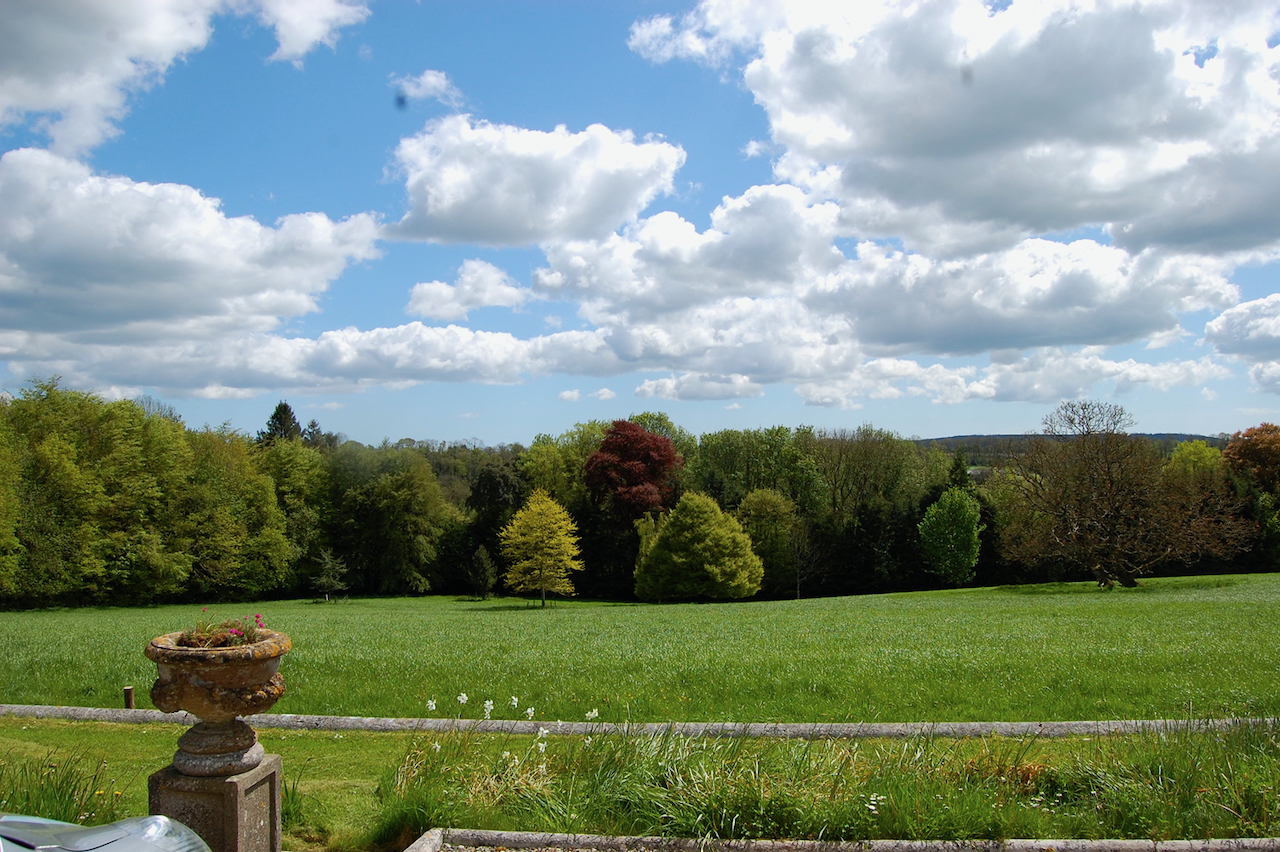
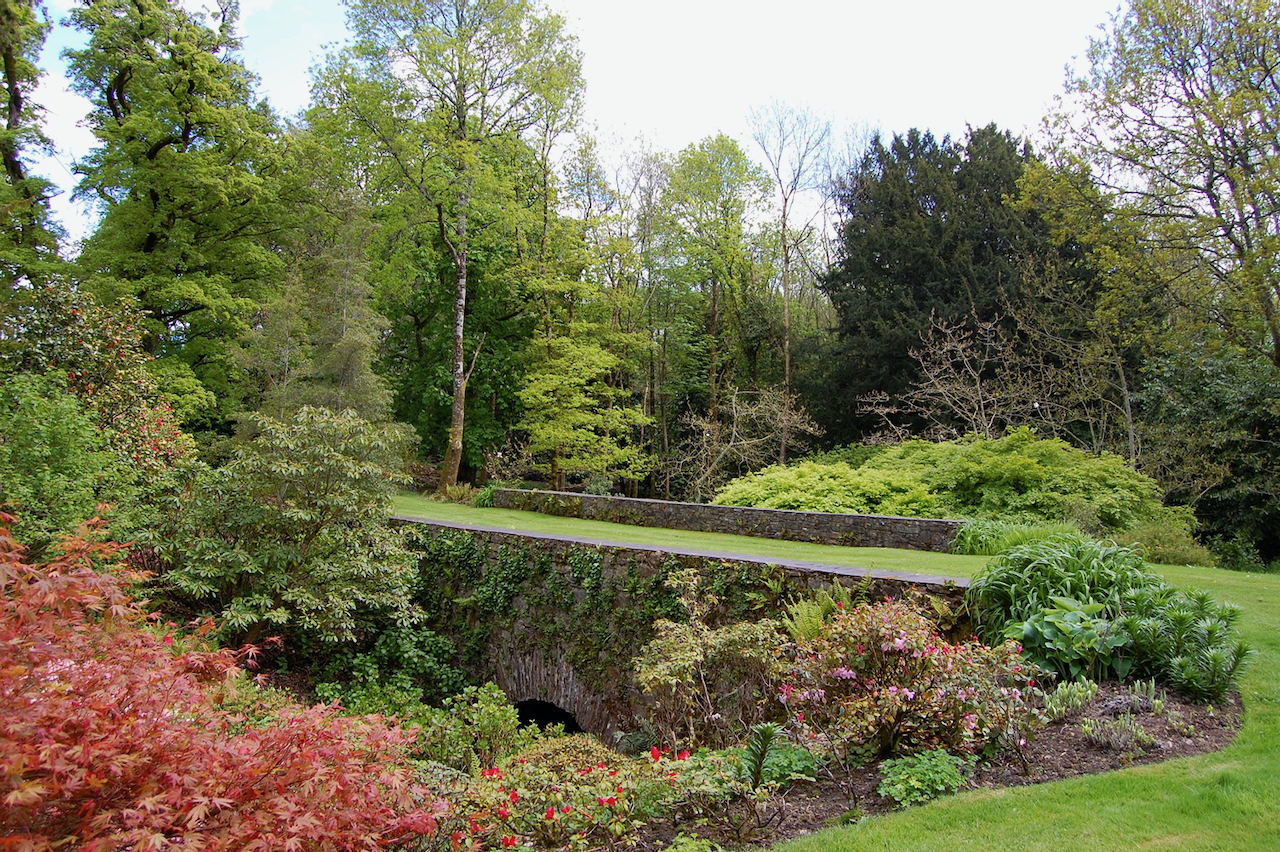
It was nearly 2pm at this stage so we fetched our bagels from the car, sat on the bridge to lunch. Stephen rang ahead to Tourin House to let them know that we were coming for a visit.
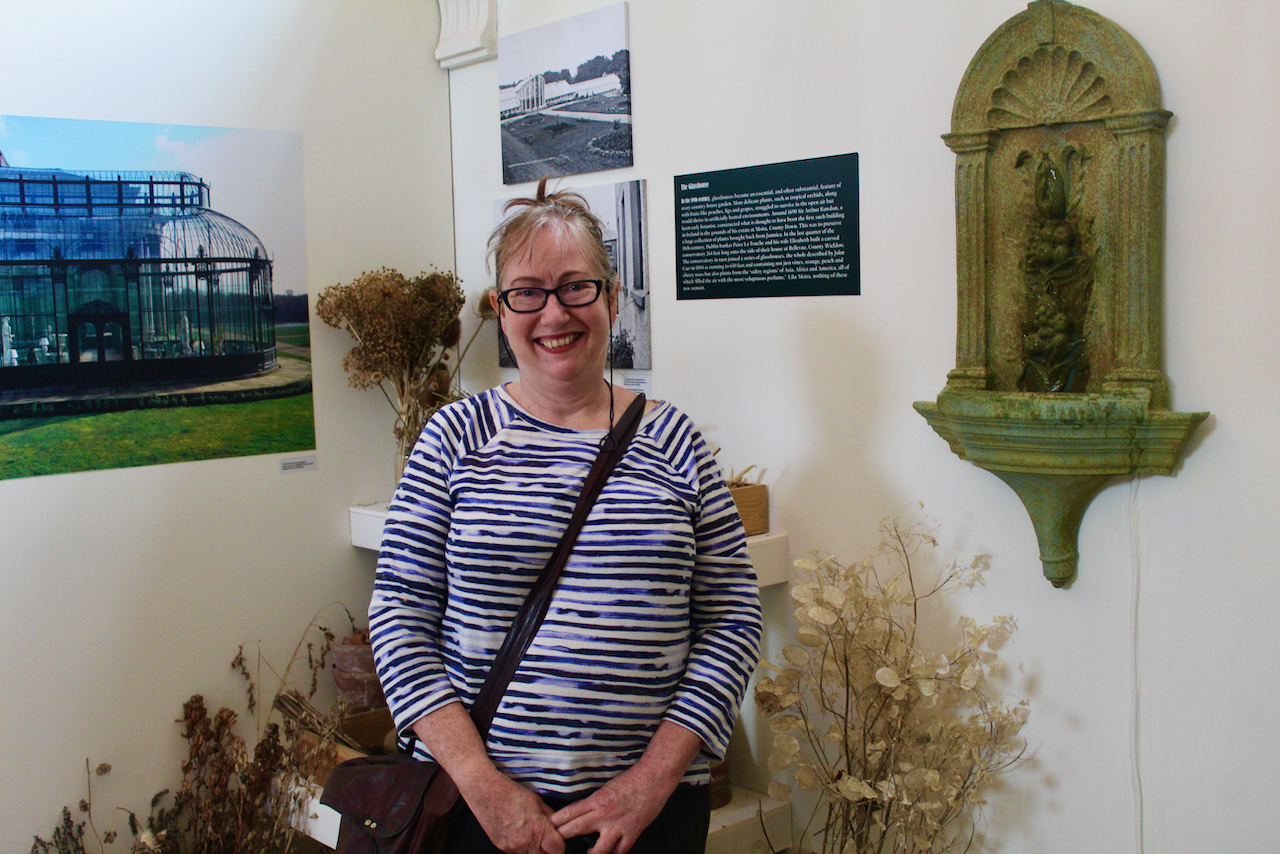
Donation
Help me to fund my creation and update of this website. It is created purely out of love for the subject and I receive no payment so any donation is appreciated! For this entry, I paid for petrol and nearby accommodation.
€10.00
[1] http://www.lismoreheritagetown.ie/comunity/salterbridge-house-gardens/
[2] Mark Bence-Jones. A Guide to Irish Country Houses. (originally published as Burke’s Guide to Country Houses volume 1 Ireland by Burke’s Peerage Ltd. 1978); Revised edition 1988 Constable and Company Ltd, London.
[3] http://lordbelmontinnorthernireland.blogspot.com/2014/08/salterbridge-house.html
[4] https://theirishaesthete.com/2016/02/27/a-blackwater-beauty/
[7] https://theirishaesthete.com/2015/08/29/salterbridge/
[8] see my entry for Powerscourt Townhouse, 59 South William Street, Dublin 2
[9] There is more about the Wingfield family on the Powerscourt estate website
https://powerscourt.com/bid154226the-lineage-of-the-wingfield-family-at-powerscourt-estate-wicklow
Text © Jennifer Winder-Baggot, www.irishhistorichouses.com